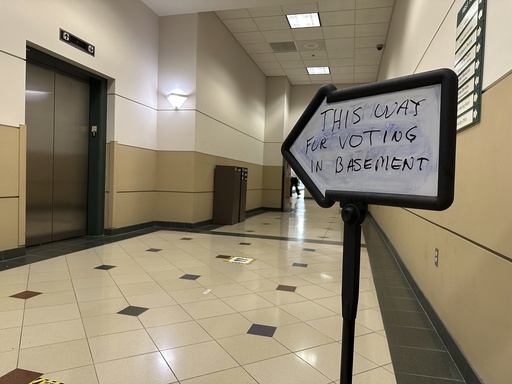
Presidential elections often see the highest voter turnout, making it crucial for individuals to have a strategy in place. This preparation can help sidestep long queues, minimize errors, and assist others in the process.
On Election Day, November 5, all polling locations across Pennsylvania will be operating from 7 a.m. until 8 p.m. Anyone standing in line at 8 p.m. will still be permitted to cast their vote.
Here are five essential steps to ensure you’re ready to vote in person.
**Step 1: Verify Your Voter Registration**
Voters in Pennsylvania can confirm their registration status through an online portal by entering details like their name or driver’s license number. Alternatively, they can contact their county elections office directly. It is important to note that since the deadline for voter registration was October 21, individuals who are not registered will not be able to participate in the election.
Inactive voters—those who haven’t participated in the last two federal elections—must complete a reactivation form at their local elections office, where they might need to provide identification; nonetheless, they will be allowed to vote normally.
**Step 2: Check Your Polling Place**
Polling locations can change for various reasons, so it’s essential to verify your assigned site. According to Greg Monskie, the chief operations officer for York County, polling sites may be altered if the hosts decline or if a venue isn’t suitable for the expected voter turnout. Affected voters should have received notifications by mail about any changes. An online tool from the Department of State allows voters to input their address to discover their polling site.
**Step 3: Schedule When to Vote**
Presidential elections typically attract the largest crowds. Polling hours on November 5 are from 7 a.m. to 8 p.m., with peak times expected early in the morning, during lunch, and after work. To avoid busy times, voting mid-morning or mid-afternoon is advisable, helping to minimize wait times not only for oneself but for others as well.
**Step 4: Understand What to Bring**
Some voters may need to present additional identification at the polls. First-time voters at a precinct are required to show ID, which could consist of a driver’s license, a government-issued ID, a U.S. passport, or a student ID, among other acceptable forms. If a voter does not possess ID, they can still cast a provisional ballot, which will be counted once their eligibility is confirmed by the county.
**Step 5: Complete Your Vote**
Familiarize yourself with the candidates listed on your ballot before heading to the polls. Voters are encouraged to bring notes or utilize their mobile devices while completing their ballots.
If you requested a mail-in ballot but prefer to vote in person, it is still possible to do so, albeit with extra steps. Voters must bring their mail-in ballot and return envelope to their polling site, surrender their mail-in ballot, complete necessary paperwork, and then vote in person, which can add some time depending on the polling location’s crowd level. Those who fail to provide their mail-in ballot will only be able to vote provisionally, pending verification that they didn’t already vote by mail.
